India, Mathura, 2nd-3rd century. Well carved standing in tribhanga, holding a fruit basket in her raised right hand, the left resting on the head of her child standing beside her. She is richly adorned with billowing scarves and beaded jewelry. The face with a fine expression marked by almond-shaped eyes below elegantly arched eyebrows and full lips forming a calm smile. The wavy hair surmounted by a floral headdress. Provenance: Arthur Huc (1854-1932). Marcel Huc, inherited from the above. Thence by descent within the same family. Arthur Huc was the chief editor of La Dépêche du Midi, at the time the leading newspaper in Toulouse, France. He was also an accomplished art critic and early patron of several artists, including Henri de Toulouse- Lautrec. At the same time, Arthur Huc was a keen collector of Asian art, a passion that he inherited from his legendary ancestor Évariste Régis Huc, also known as the Abbé Huc (1813-1860), a French Catholic priest and traveler who became famous for his accounts of Qing-era China, Mongolia and especially the then-almost-unknown Tibet in his book “Remembrances of a Journey in Tartary, Tibet, and China”. Condition: The torso and the fruit basket were at some point broken off and have subsequently been reattached. Extensive wear, weathering and erosion, losses, cracks, soil encrustations. French Export License: Certificat d’exportation pour un bien culturel Nr. 185472 dated 30 June 2017 has been granted and is accompanying this lot. Weight: 1,610 g Dimensions: Height 23.7 cm The goddess Hariti derives her identity from a story of conversion. In a former lifetime, Hariti took a vow to devour the children of Rajagriha. Upon hearing of her activities, the Buddha concealed Hariti's own dearest child, lured her to him, and convinced her to amend her destructive behavior. To ensure fertility and sustenance, an image of Hariti with a child in her arms is often found in Buddhist monasteries. Literature comparison: Compare a sandstone relief with a depiction of Hariti, also Mathura, 2nd-3rd century, at Christie’s New York, 16 September 2008, lot 353; a Gandharan gray schist figure of Hariti, also dated 2nd-3rd century, at Christie’s New York, 20 March 2008, lot 330; and a soapstone figure of Hariti, dated 6th-7th century, in the collection of the Victoria & Albert Museum, accession number IM.65-1911.
India, Mathura, 2nd-3rd century. Well carved standing in tribhanga, holding a fruit basket in her raised right hand, the left resting on the head of her child standing beside her. She is richly adorned with billowing scarves and beaded jewelry. The face with a fine expression marked by almond-shaped eyes below elegantly arched eyebrows and full lips forming a calm smile. The wavy hair surmounted by a floral headdress. Provenance: Arthur Huc (1854-1932). Marcel Huc, inherited from the above. Thence by descent within the same family. Arthur Huc was the chief editor of La Dépêche du Midi, at the time the leading newspaper in Toulouse, France. He was also an accomplished art critic and early patron of several artists, including Henri de Toulouse- Lautrec. At the same time, Arthur Huc was a keen collector of Asian art, a passion that he inherited from his legendary ancestor Évariste Régis Huc, also known as the Abbé Huc (1813-1860), a French Catholic priest and traveler who became famous for his accounts of Qing-era China, Mongolia and especially the then-almost-unknown Tibet in his book “Remembrances of a Journey in Tartary, Tibet, and China”. Condition: The torso and the fruit basket were at some point broken off and have subsequently been reattached. Extensive wear, weathering and erosion, losses, cracks, soil encrustations. French Export License: Certificat d’exportation pour un bien culturel Nr. 185472 dated 30 June 2017 has been granted and is accompanying this lot. Weight: 1,610 g Dimensions: Height 23.7 cm The goddess Hariti derives her identity from a story of conversion. In a former lifetime, Hariti took a vow to devour the children of Rajagriha. Upon hearing of her activities, the Buddha concealed Hariti's own dearest child, lured her to him, and convinced her to amend her destructive behavior. To ensure fertility and sustenance, an image of Hariti with a child in her arms is often found in Buddhist monasteries. Literature comparison: Compare a sandstone relief with a depiction of Hariti, also Mathura, 2nd-3rd century, at Christie’s New York, 16 September 2008, lot 353; a Gandharan gray schist figure of Hariti, also dated 2nd-3rd century, at Christie’s New York, 20 March 2008, lot 330; and a soapstone figure of Hariti, dated 6th-7th century, in the collection of the Victoria & Albert Museum, accession number IM.65-1911.

.jpg)
.jpg)
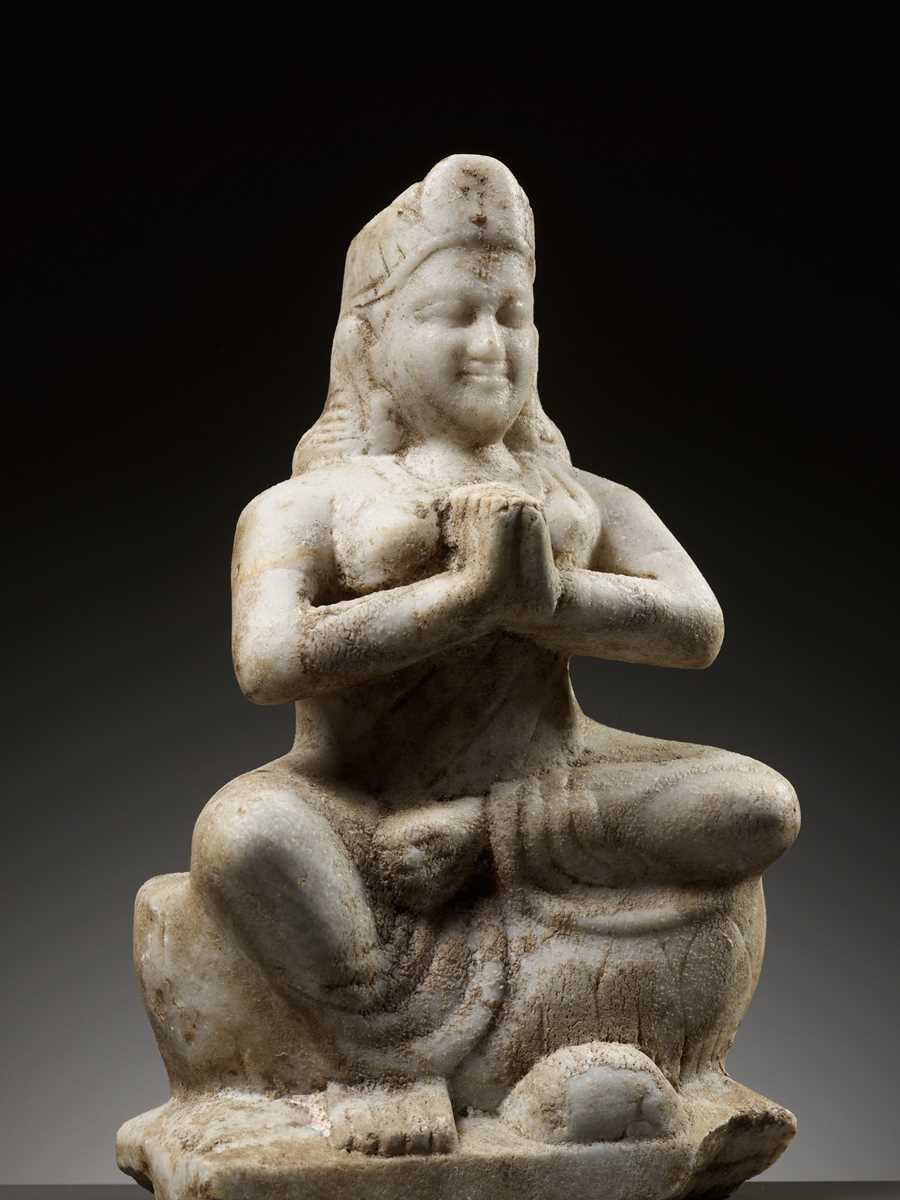
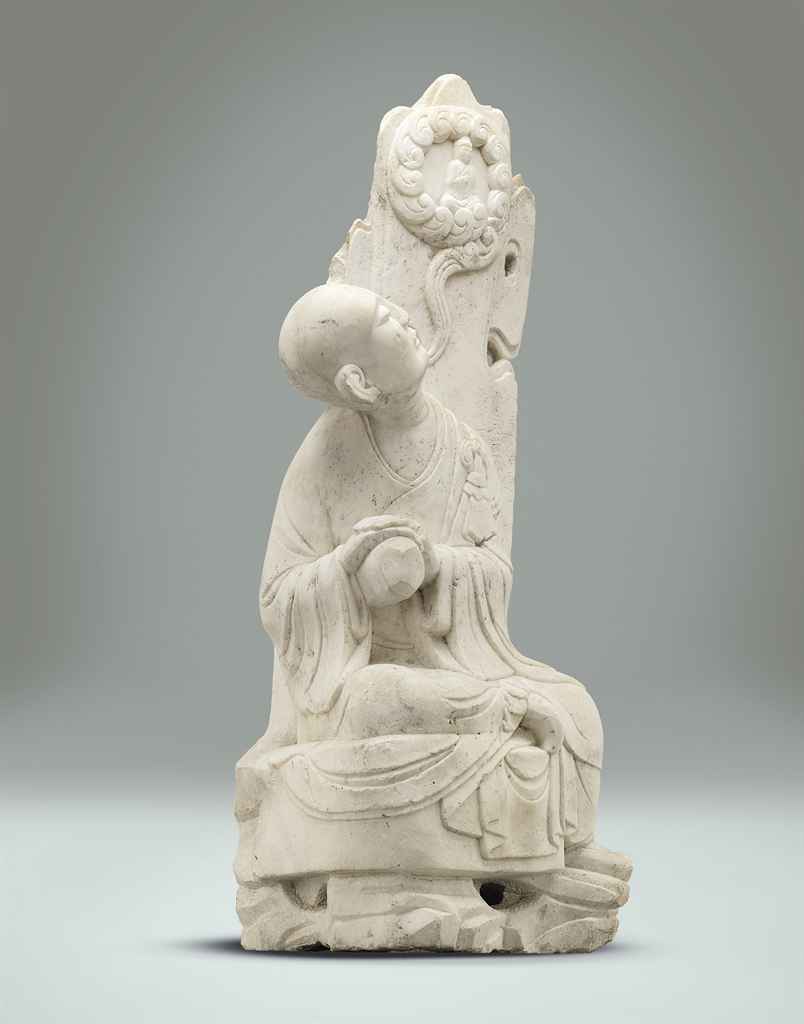

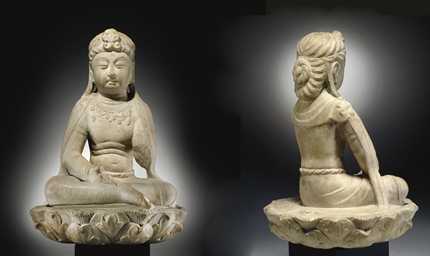
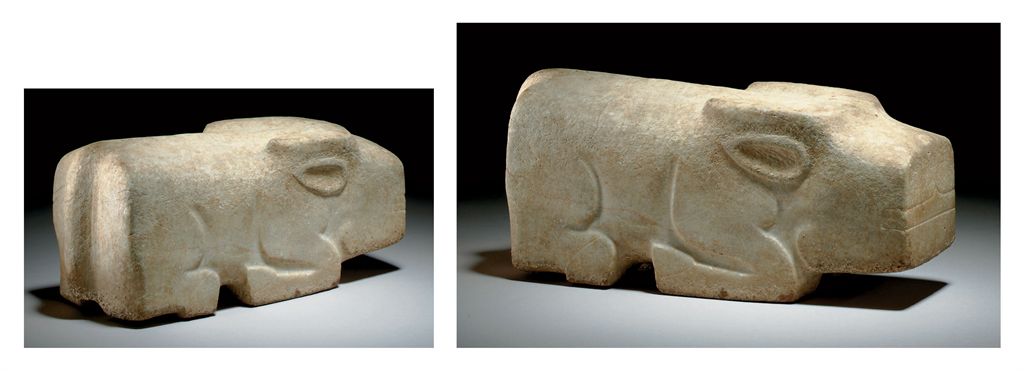
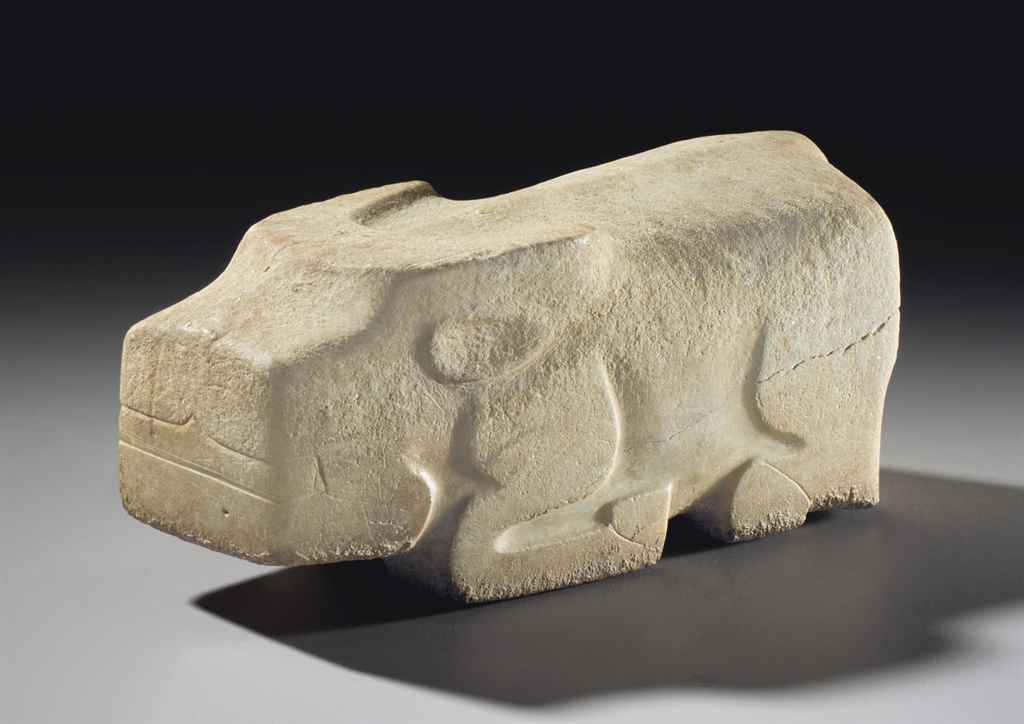
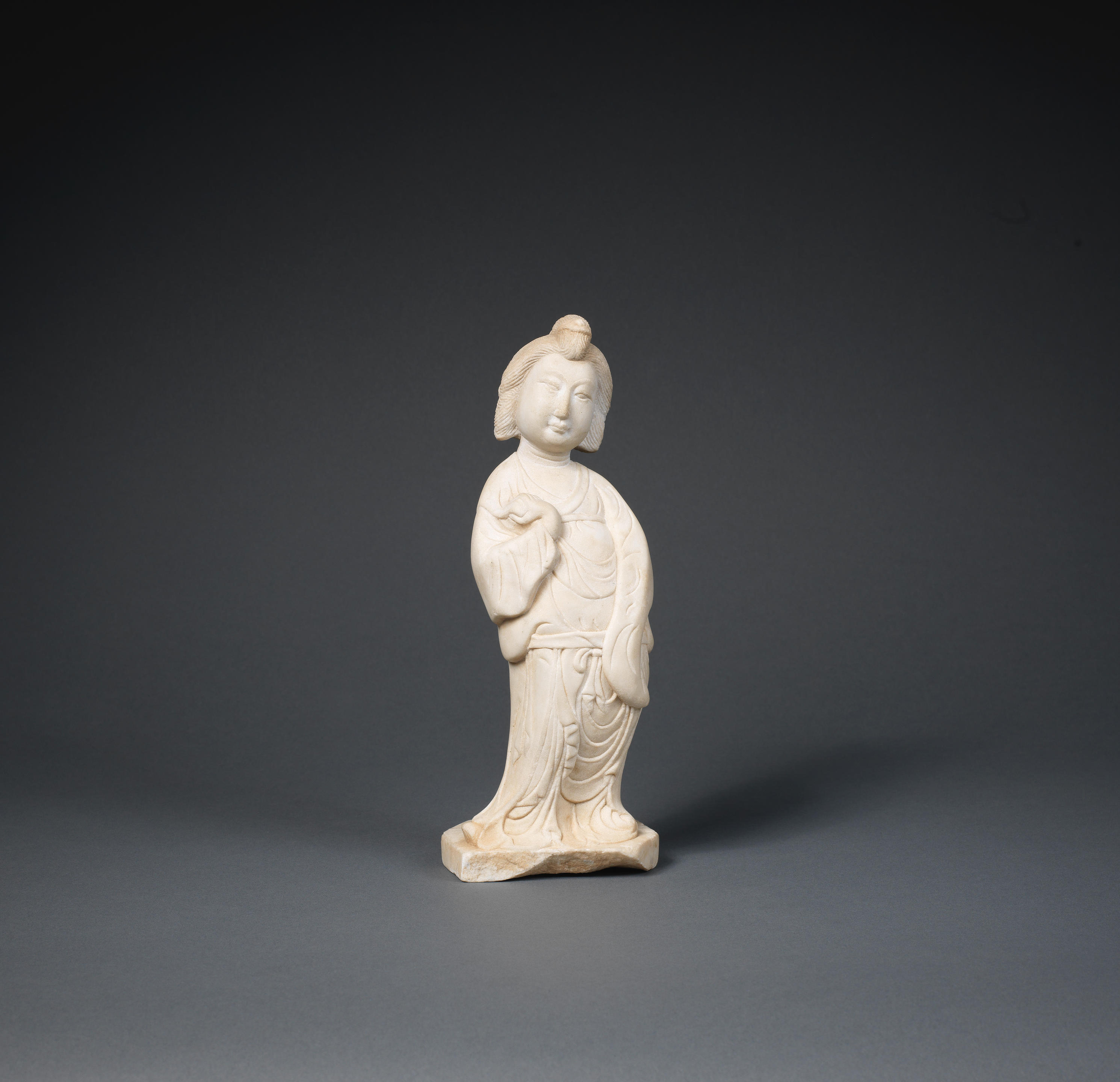



Try LotSearch and its premium features for 7 days - without any costs!
Be notified automatically about new items in upcoming auctions.
Create an alert